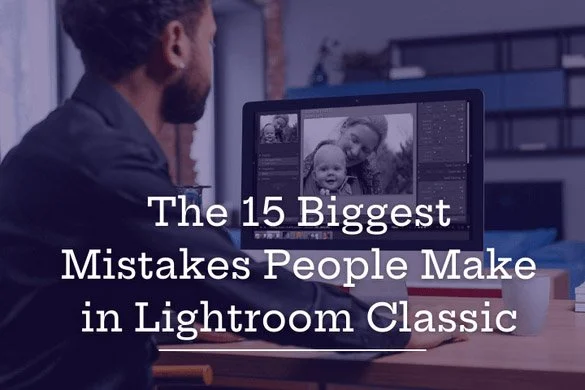How to Organize (or Not) Your Prints Before Scanning
/So maybe you’ve been thinking about scanning some of those old prints you have lying around in boxes or just scattered everywhere. This is a great idea for a couple of reasons.
Disasters Happen
First off, I can’t stress enough how vulnerable these items are—especially after seeing too many friends and acquaintances lose everything in the recent fires here in LA. Every time I read the news, it seems wildfires and floods are affecting people all across the country. You can never take for granted that anything will survive when natural or man-made disasters can strike at any time. I’m not trying to be alarmist, but the reality is hitting too many people too hard in these times, as extreme weather becomes the norm.
No One Wants a Messy Photo Legacy
The other reason is something almost equally important. If you’ve ever thought about passing your photo legacy or family history on to your kids or other family members, the truth is: no one’s going to appreciate being handed a jumbled pile of prints with a casual, “Hey, these are all yours now.”
The solution to both issues is simple: do some basic organizing, then scan the prints so they’re safe and shareable. It doesn’t have to be a lot of work, and once it’s done, there’s a huge sense of relief knowing you’ve taken care of something that might’ve been lingering on your mental to-do list for a long time.
It’s up to you, but I believe it’s easier to do some basic organizing before scanning, rather than trying to make sense of the digital files after the fact. This preparation will also help with future organization and archiving.
Create Sorting Piles
What I suggest is to start by sorting loose prints into piles. Ultimately, I like to organize prints by decade, and then—if possible—sub-sort by year or event. Older prints (from before you were born) are harder to date unless specifically marked, so organizing by decade might be the best you can do. More recent prints are usually easier to identify by date and event.
Use Visual Cues to Group Prints
To begin sorting, you can use visual cues to make the process easier. You may start to notice different types of prints: square versus rectangular, bordered versus borderless, color versus black and white. Some prints may have textured paper or decorative borders, or may differ in size or aspect ratio. Some might even have dates stamped on the white border, while others have dates or notes written on the back.
There’s a good chance that prints with similar characteristics were taken around the same time, possibly by the same person. Start grouping these similar types together—you’ll often begin to notice patterns or similarities that make the sorting process clearer.
Refine Your Categories
Once you have those initial piles, try to arrange them by decade. From there, see if you can further sort them by year, event, trip, or other categories that make sense.
This video snippet is from my course on Legacy Preservation and includes tips on identifying print styles and the decades they were most commonly used. Here’s a link to the full course if you're interested.
If You're Using a Scanning Service
The important thing is to carry the organization you’ve created into the scanning process. If you're doing it yourself, that’s great. But if you're using an outside scanning service, make sure they will respect and maintain the organization of your prints.
When clients give me their organized prints, we place an index card with the appropriate information in front of each stack. That index card is scanned along with the prints and serves as a visual, identifiable divider. I then use that information to structure the scanned files into corresponding folders. This is critical—so make sure you have a clear discussion with whoever is doing your scanning.
Need Scanning Services?
Here’s a link to my scanning services and pricing. I’m happy to talk with you about anything you’d like to understand before beginning the process.
What Organized Scans Look Like
Below is a picture of an organized set of scans in their folders, with all files named according to the folder and sequence.
Let me know if you'd like help getting started—I’m here to support your legacy preservation journey.
















